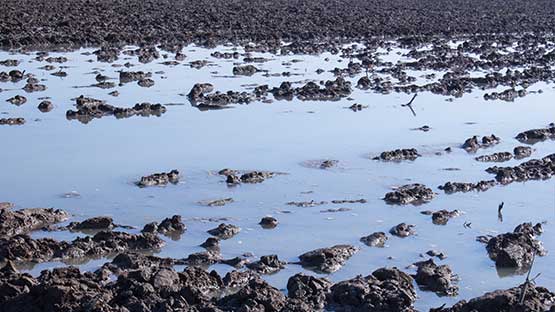
As I met with my customers last winter, there were a lot of jokes about “putting the whole farm to Prevented Plant”, due to depressed market conditions. Prevented Planting (PP) isn’t an option in February just because it pencils out better than planting soybeans. Prevented Planting is an option as we approach final planting dates and it has been too wet to plant. PP is an option if the cause of loss is general to the surrounding area and prevents other producers from planting acreage with similar characteristics.
Now that we are in the middle of May and very little planting has been done, the joking around has turned to real questions. Let’s go over a few.
Q: How much will I get paid for acres that are too wet to plant?
A: Each crop on your policy and each unit on your farm has different PP coverage based on this calculation: APH multiplied by the coverage level on planted acres times PP coverage level times projected price.
Q: “*Corn” is my highest-paying crop for all sections. What do I need to do to get paid PP corn on all my wet acres? (*In all of the following examples, replace “corn” with your highest-paying crop).
A: Each crop/county has maximum acres available for PP payment, determined by the highest acres insured (planted plus PP) in the last four years. This number is your PP Eligibility. The difference between PP Eligibility and 2019 planted acres is what can be paid as PP corn. Your PP Eligibility will increase if you have more land than last year. Your PP Eligibility will not decrease if you have less land than last year.
Q: What if I request more PP corn than I have available?
A: Payment will roll to crop with PP eligibility and most similar PP coverage to the crop you requested, without going higher. It is better to request the highest-paying crop and have it roll to a different crop than to request the different crop in the first place.
Q: Do I have to plant corn in a field to request PP corn?
A: First, it is important to understand the definition of a field for PP purposes. A field is all tillable land within a natural or artificial boundary, such as a fence, road, waterway, tree row, CRP, non-cropland and alfalfa fields. A field for PP purposes is not always the same as an official field on a Farm Service Agency map.
You can request PP corn in the field if:
- Corn is planted in the field OR
- Nothing is planted in the field OR
- In one of the last four years corn and the current crop were both planted in the field; AND the qualifying PP acres are 20% of the field or 20 acres, whichever is less.
Q: My field has 300 acres of cropland. I think I’ll only be able to seed 200 acres this year. Will I get paid on the remaining 100 acres?
A: Planted acres in 2019 will be subtracted from the most acres planted/insured/harvested in the last four years and the difference will be considered for a PP payment.
Q: I have Enterprise Units—how does that work for PP? (Enterprise Units insure all acres of the crop/county together)
A: Each PP crop has a minimum size requirement: 20 acres or 20% of the unit, whichever is less. It is easier to meet the minimum size requirement with Enterprise Units because wet areas from each field can be combined to 20/20 rule.
Q: I have Optional Units—how does that work for PP? (Optional Units insure each section separately.)
A: Each PP crop has a minimum size requirement: 20 acres or 20% of the unit, whichever is less. With optional units each section needs to independently meet the 20/20 rule.
Q: What do I have to do to get the ball rolling on my PP claim?
A: PP Notice of Loss should be filed within 72 hours of the final planting date of the crop. If you plant after the final planting date, you should file your PP Notice of Loss within 72 hours of when you quit planting. When you file a Notice of Loss for PP, you just need to state the county and the crop. You do not need to list legal descriptions or number of acres.
Once you have filed a notice of loss, your PP claim will be mostly on hold until you submit your official acreage report.
Whether you have just a few PP acres in a couple fields or whole fields that can’t be planted, contact your insurance specialist as soon as you anticipate a claim to ensure a better claim experience.



